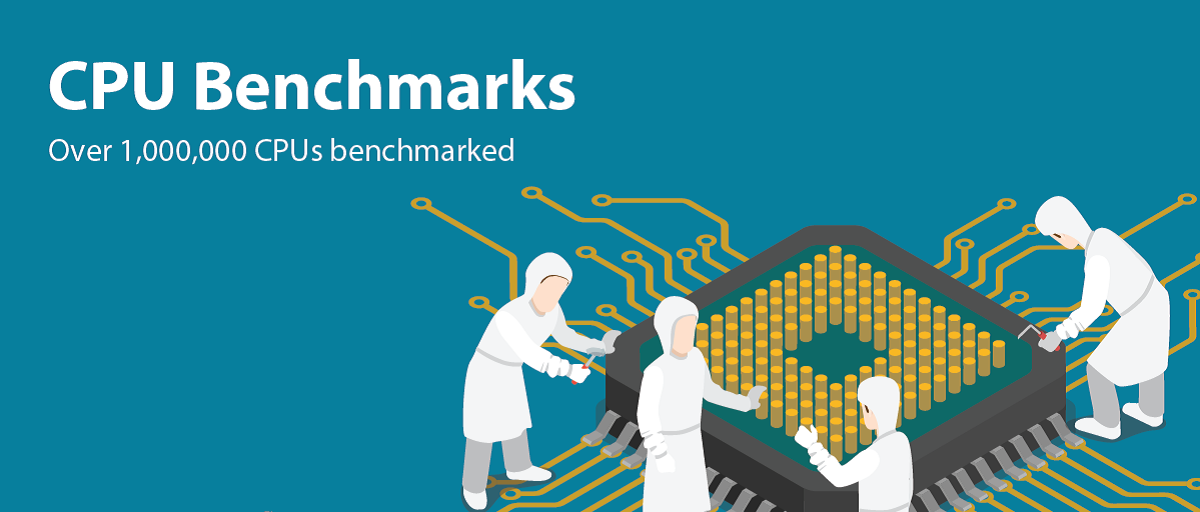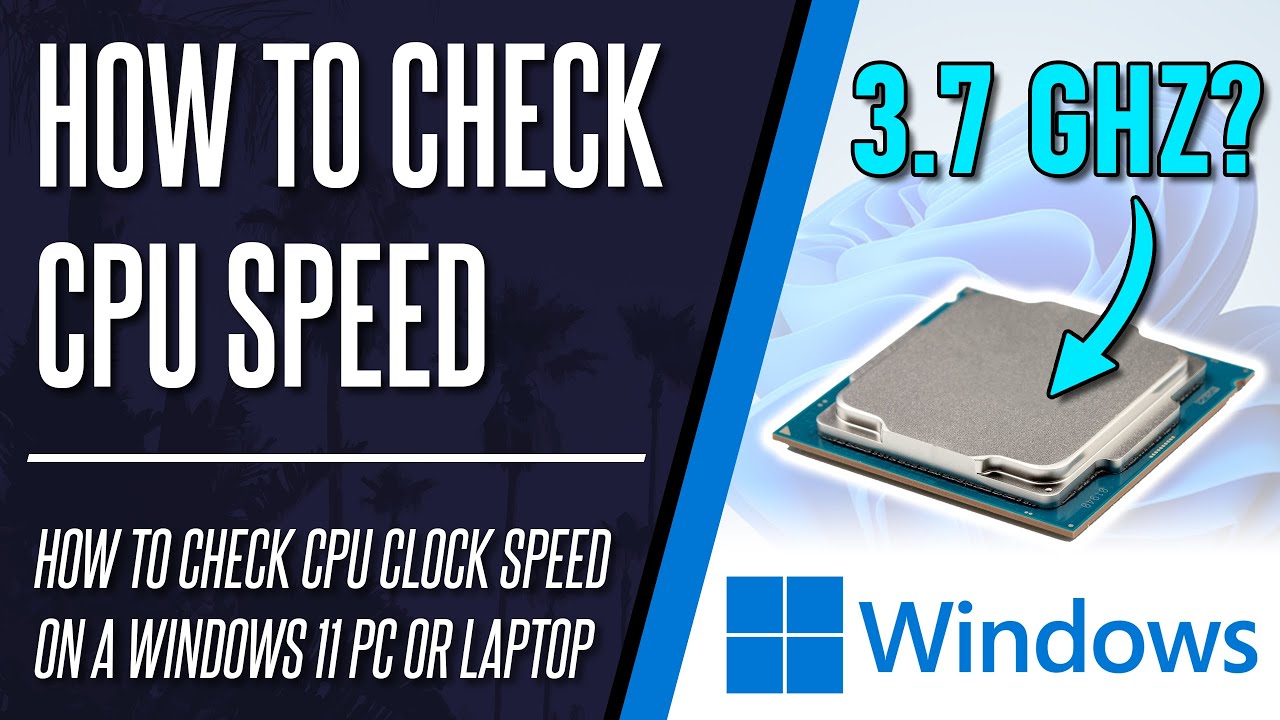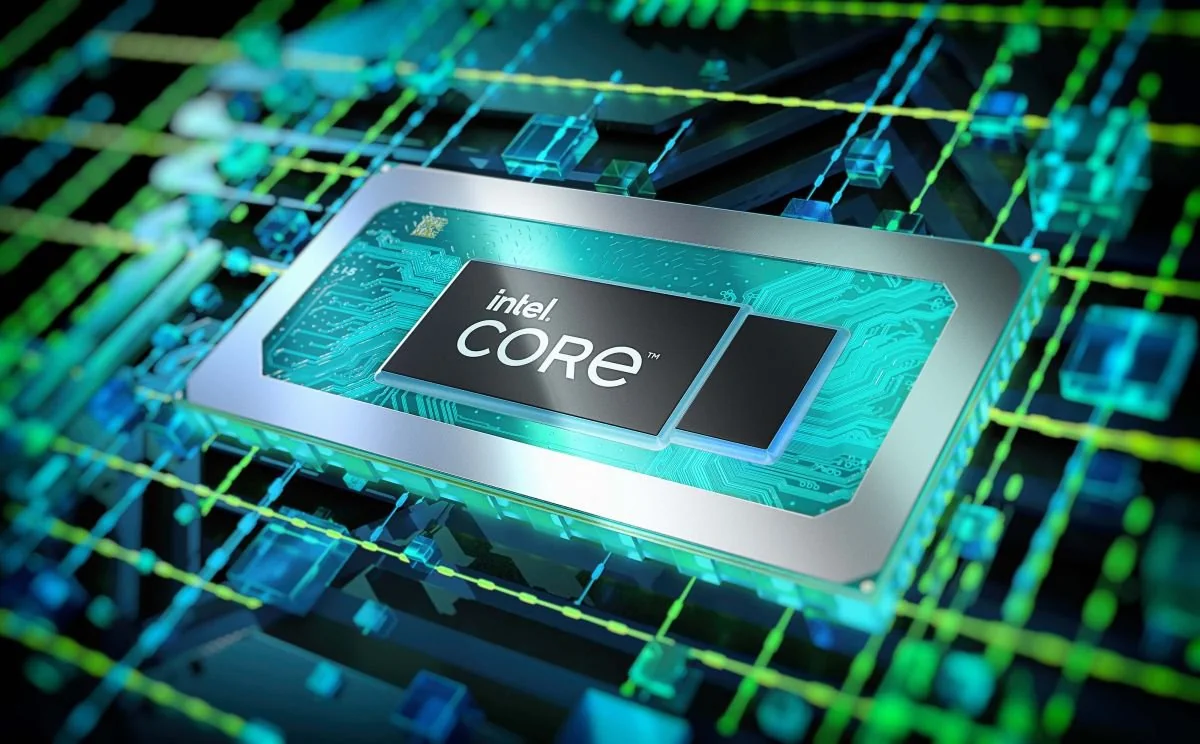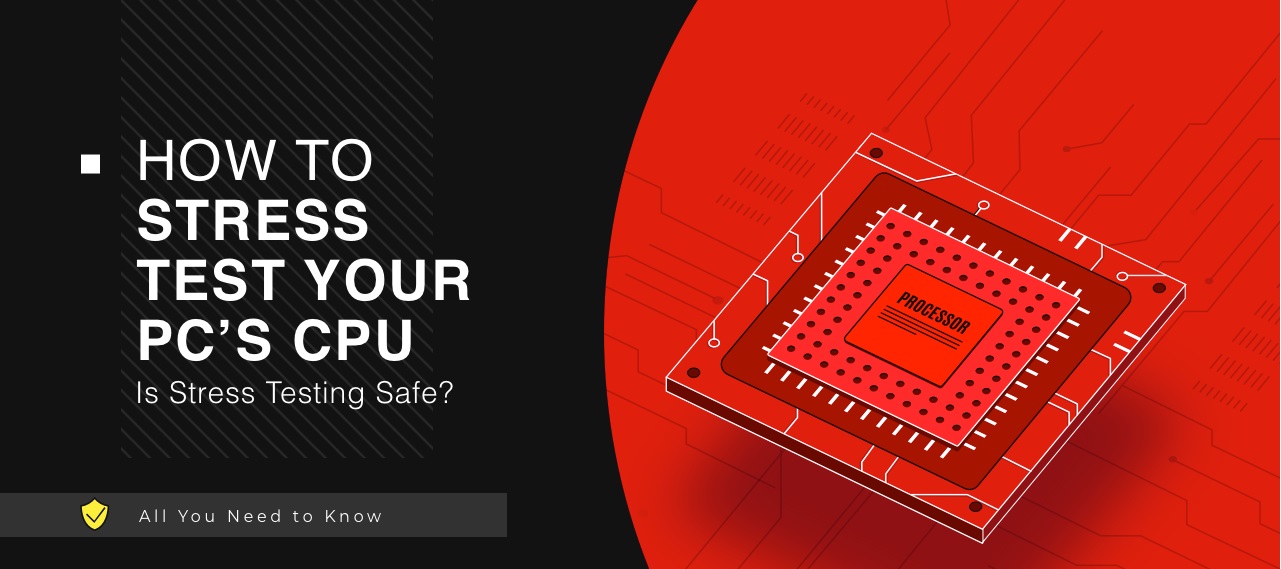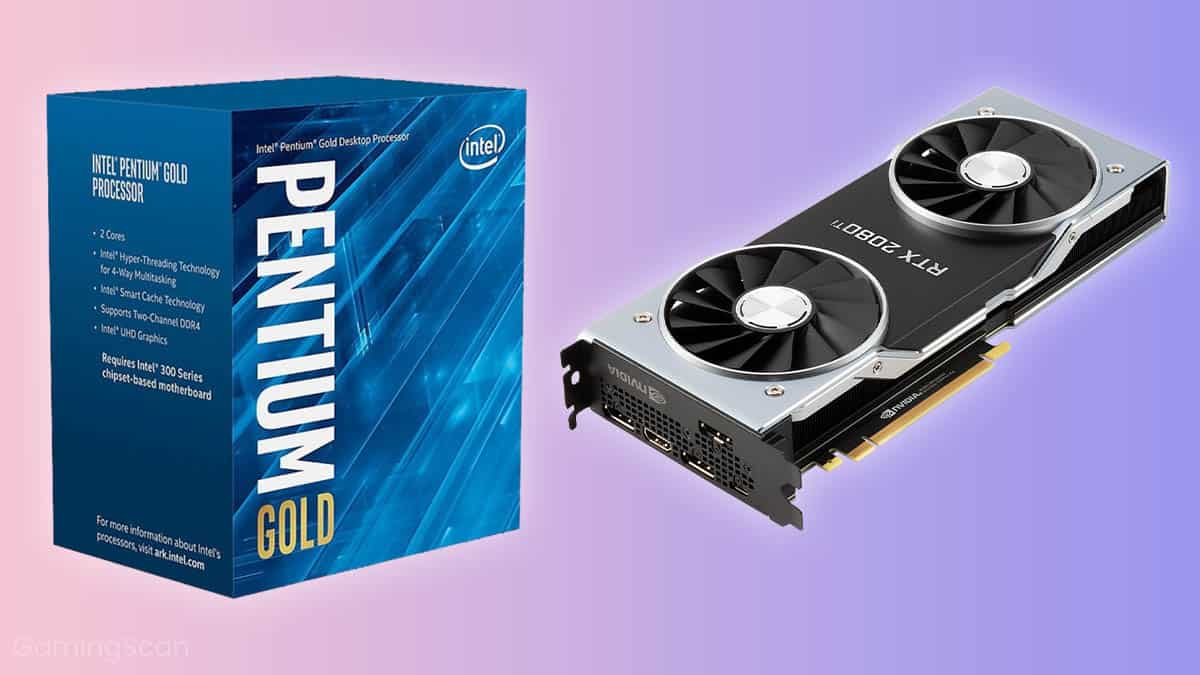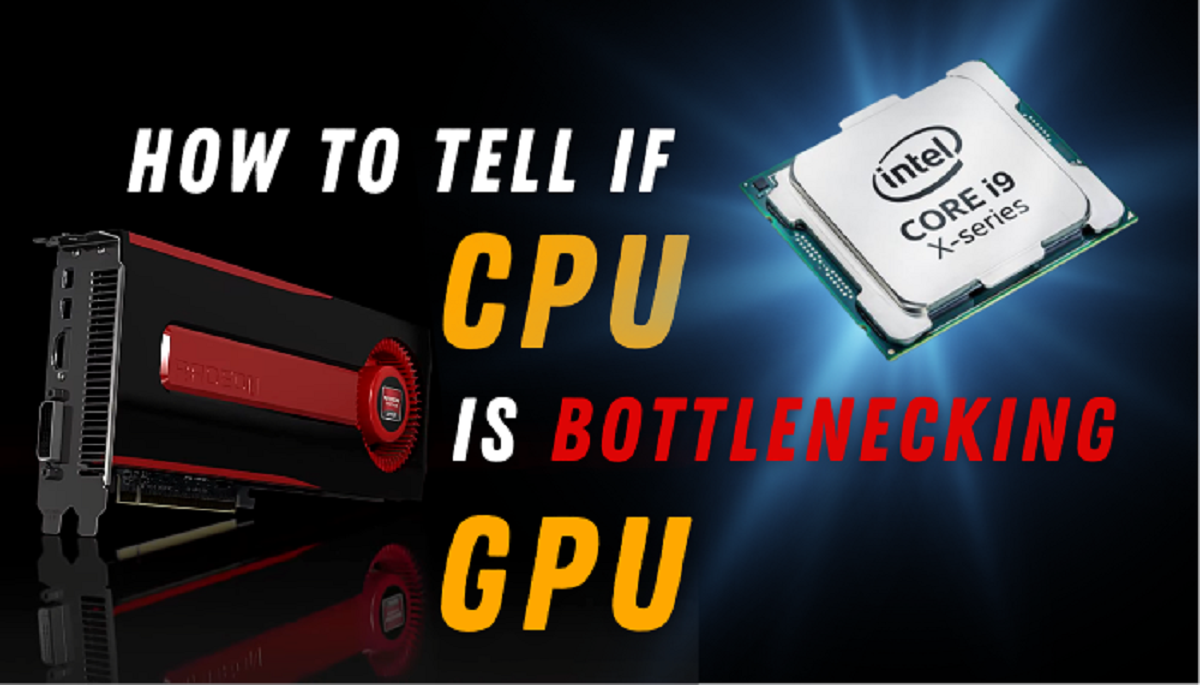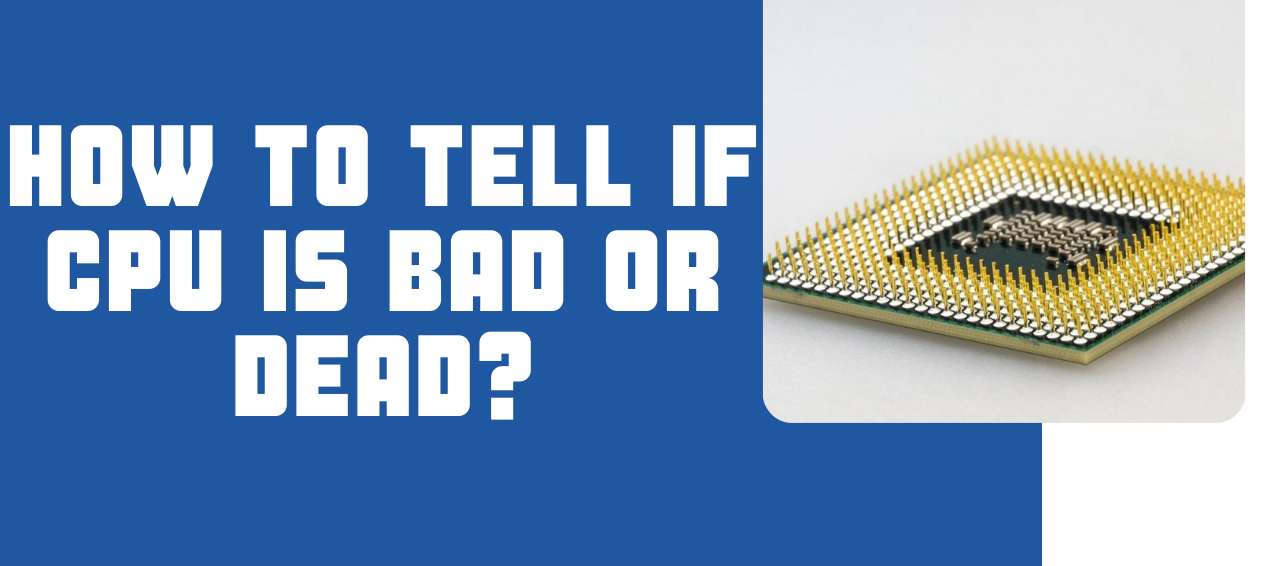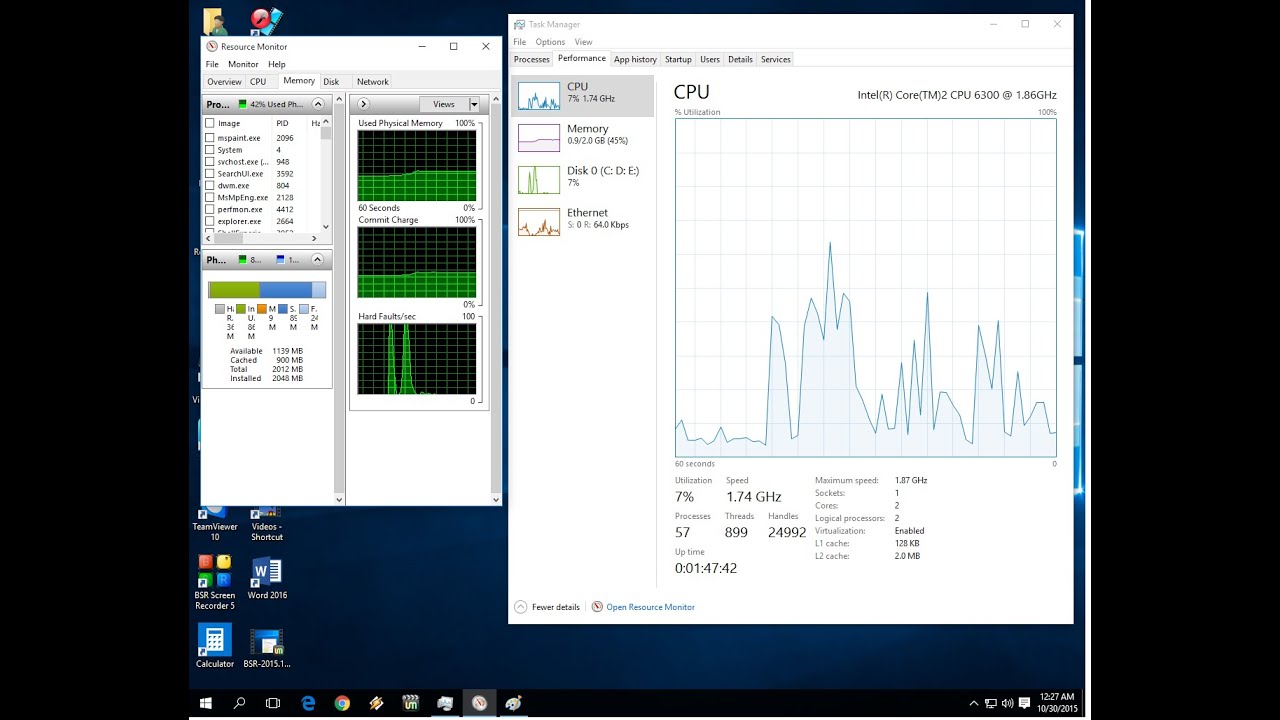Introduction
Welcome to the world of CPU benchmarks! If you’ve ever wondered how to measure the performance of a computer’s central processing unit (CPU), you’re in the right place. In this article, we’ll explore what CPU benchmarks are, why they are important, and how to interpret their results.
As technology continues to advance, CPUs play a crucial role in the performance of computers and devices. Whether you’re a casual user, a gamer, or a professional working with resource-intensive applications, understanding CPU benchmarks is essential in choosing the right hardware to meet your needs.
CPU benchmarks are standardized tests designed to assess the processing power and efficiency of a CPU. These benchmarks measure the performance of a CPU in various tasks, such as data processing, multitasking, and computational operations. By running these tests, users can compare the performance of different CPUs and make informed decisions when purchasing or upgrading their systems.
The importance of CPU benchmarks lies in their ability to provide a numerical value that represents the performance of a CPU. These scores help users gauge the overall capabilities of a CPU and determine its suitability for specific tasks. Additionally, CPU benchmarks enable users to compare different models and manufacturers, ensuring they choose the best CPU that aligns with their computing needs.
There are various types of CPU benchmarks available, each focusing on different aspects of performance. Some benchmarks assess the overall system performance, while others concentrate solely on CPU-specific tasks. Additionally, benchmarking tools may evaluate different aspects like single-core performance, multi-core performance, or thermals and power consumption.
When interpreting CPU benchmark scores, it’s essential to consider the intended use of the CPU. For example, a CPU with high scores in gaming benchmarks may not necessarily deliver the same level of performance in tasks like video editing or scientific simulations. Therefore, it’s crucial to understand the specific requirements of the applications you plan to run and choose a CPU that excels in those areas.
Several factors can influence CPU benchmark scores. These include the CPU architecture, clock speed, number of cores, cache size, and memory speed. Additionally, the efficiency of the operating system and the applications running on the CPU can impact benchmark results. Understanding these factors helps users make informed decisions and optimize the performance of their systems.
In the next sections, we will explore different types of CPU benchmarks, the tools used for benchmarking, and tips for choosing the right CPU for your needs. So, buckle up and get ready for an exciting journey into the world of CPU performance assessment!
What is a CPU Benchmark?
A CPU benchmark is a standardized test or set of tests designed to evaluate the performance of a computer’s central processing unit (CPU). It measures the ability of the CPU to carry out various tasks and provides a numerical score that represents its performance.
Think of a CPU benchmark as a performance rating system for CPUs. Just as a car’s horsepower rating gives you an idea of its power and speed, a CPU benchmark score gives you an indication of how well a CPU can handle computational tasks.
CPU benchmarks are typically designed to simulate real-world computing scenarios, such as handling large data sets, running complex software applications, or performing intense calculations. By subjecting the CPU to these tests, benchmarking software can measure its processing speed and efficiency.
These tests are carefully crafted to stress different areas of the CPU, such as single-core performance, multi-core performance, cache utilization, and memory access. By evaluating these aspects, benchmarking tools can provide a comprehensive overview of a CPU’s capabilities and limitations.
CPU benchmarks are valuable tools for both consumers and professionals. For consumers, benchmarks help them make informed decisions when buying a new computer or upgrading their existing system. By comparing the benchmark scores of different CPUs, users can choose the one that best suits their needs and budget.
Professionals who rely on high-performance systems, such as gamers, video editors, and 3D designers, benefit from CPU benchmarks as well. These benchmarks allow them to determine which CPUs are best equipped to handle their specific workload, ensuring smooth and efficient operation.
It’s worth noting that CPU benchmarks should be used as one of many factors to consider when evaluating a CPU’s performance. Real-world performance can vary depending on factors like software optimization, memory speed, storage speeds, and the specific tasks being performed. However, benchmarks provide a good starting point for comparison and can offer valuable insights into a CPU’s capabilities.
In the following sections, we will delve deeper into the different types of CPU benchmarks, how they are measured, and how to interpret the benchmark scores. So, let’s continue our exploration of the fascinating world of CPU performance evaluation!
Importance of CPU Benchmark
CPU benchmarks play a crucial role in today’s technology-driven world. They provide valuable insights into the performance and capabilities of a computer’s central processing unit (CPU), making them essential for both consumers and professionals. Here’s why CPU benchmarks are important:
1. Performance Comparison: CPU benchmarks allow users to compare the performance of different CPUs. By running standardized tests, benchmarking software provides numerical scores that represent a CPU’s processing power. These scores help users identify which CPUs are better suited for their needs and budget.
2. Informed Buying Decisions: For consumers in the market for a new computer or looking to upgrade their existing system, CPU benchmarks are a valuable tool. They enable users to make informed decisions by comparing the performance of various CPUs. By considering factors like single-core performance, multi-core performance, and specific workload requirements, users can choose the CPU that best meets their needs.
3. Optimal System Configuration: Professionals working with resource-intensive applications, such as designers, video editors, and gamers, rely on high-performance systems. CPU benchmarks help these individuals determine which CPUs are best suited for their specific workload. By selecting a CPU that excels in tasks relevant to their profession, professionals can optimize system performance and ensure smooth and efficient operation.
4. Future-Proofing: By understanding CPU benchmarks, users can future-proof their systems. Technology advances quickly, and having a CPU with high performance scores ensures longevity and the ability to handle evolving software and hardware demands. Investing in a CPU with top-notch benchmark results can save users from the hassle of needing to upgrade sooner than expected.
5. Software Optimization: CPU benchmarks also provide software developers with valuable information for optimizing their applications. By identifying CPU bottlenecks and areas where performance can be improved, developers can fine-tune their software to take full advantage of a CPU’s capabilities. This ultimately leads to better user experiences and more efficient software utilization.
6. Performance Tuning: For users who enjoy customizing their systems and maximizing performance, CPU benchmarks provide a baseline for performance tuning. By comparing benchmark scores before and after tweaks, users can measure the impact of changes like overclocking, tweaking CPU settings, or optimizing cooling solutions.
Overall, CPU benchmarks offer a standardized and objective way to assess the performance of CPUs. They empower users to make informed decisions, optimize system configurations, and ensure their computing needs are met. By understanding CPU benchmarks and their importance, users can navigate the world of technology with confidence and stay ahead of the curve.
Different Types of CPU Benchmarks
CPU benchmarks come in various types, each focusing on different aspects of a central processing unit’s (CPU) performance. Understanding these different benchmarks can provide valuable insights into a CPU’s capabilities and help users make informed decisions when selecting the right hardware for their needs. Here are some of the most common types of CPU benchmarks:
1. Single-Core Benchmarks: These benchmarks assess the performance of a CPU’s individual cores. They measure how well a CPU performs tasks that can’t be parallelized across multiple cores. Single-core benchmarks are particularly important for applications that rely heavily on single-threaded performance, such as gaming or applications that aren’t optimized for multi-core usage.
2. Multi-Core Benchmarks: As the name suggests, multi-core benchmarks focus on a CPU’s ability to handle tasks that can be parallelized across multiple cores. They evaluate how effectively a CPU can distribute and execute workload across its available cores. Multi-core benchmarks are essential for tasks like video rendering, 3D modeling, and multitasking, where the ability to utilize multiple cores can significantly improve performance.
3. Gaming Benchmarks: Gaming benchmarks assess a CPU’s performance in running various games. These benchmarks measure factors like framerate, loading times, and overall game smoothness. Since gaming often requires a balance between single-core and multi-core performance, gaming benchmarks can help users determine a CPU’s gaming capabilities and suitability for their gaming needs.
4. Productivity Benchmarks: Productivity benchmarks evaluate a CPU’s performance in everyday productivity tasks, such as web browsing, word processing, and multimedia consumption. These benchmarks simulate real-world usage scenarios and provide insights into a CPU’s ability to handle common tasks efficiently and swiftly.
5. Synthetic Benchmarks: Synthetic benchmarks are designed to provide a comprehensive evaluation of a CPU’s performance. They combine elements of single-core, multi-core, gaming, and productivity benchmarks to create a holistic view of a CPU’s capabilities. Synthetic benchmarks often stress various aspects of a CPU’s architecture, including cache performance, memory bandwidth, and floating-point operations.
6. Power and Efficiency Benchmarks: Power and efficiency benchmarks focus on a CPU’s energy consumption and thermal performance. They measure factors like power draw, temperature, and cooling efficiency. These benchmarks are crucial for users who prioritize energy efficiency, such as those using laptops or aiming to reduce environmental impact.
It’s important to note that different benchmarks have their own scoring systems and methodologies. Therefore, it is advisable to consult multiple benchmark sources and consider a range of benchmarks to get a comprehensive understanding of a CPU’s performance across different scenarios.
By exploring different types of CPU benchmarks, users can align their specific needs, whether it be gaming, productivity, or power efficiency, with the CPU’s performance characteristics. This knowledge enables users to make informed decisions when selecting the most suitable CPU for their desired applications and workloads.
How CPU Benchmarks are Measured
The measurement of CPU benchmarks involves a systematic process that aims to evaluate the performance and capabilities of a computer’s central processing unit (CPU). Let’s explore how CPU benchmarks are measured:
1. Test Scenarios: Benchmarking software developers create test scenarios that simulate real-world computing tasks. These scenarios can include tasks like data processing, image rendering, video encoding, and more. The goal is to create a representative workload that reflects the performance demands of typical software applications.
2. Benchmarking Tools: Various benchmarking tools are available, each designed to measure specific aspects of a CPU’s performance. Some popular benchmarking tools include Geekbench, Cinebench, PCMark, and 3DMark. These tools provide standardized tests and metrics for evaluating CPU performance across different scenarios.
3. Running Benchmarks: To measure CPU benchmarks, users must run the benchmarking software on their system. The software carries out the predefined test scenarios, putting the CPU under workload and assessing its performance across different metrics.
4. Metric Evaluation: Benchmarking tools provide numerical scores or metrics that represent the CPU’s performance. For example, they may measure factors like processing speed, data transfer rate, or frames per second. These metrics allow users to compare different CPUs and determine which one performs better in specific scenarios.
5. Data Analysis: Once the benchmarks have been run and the metrics collected, the data needs to be analyzed. Users can compare the benchmark scores of different CPUs to identify patterns and make informed decisions about CPU performance.
6. Consistency and Reliability: To ensure accurate benchmark results, it is important to maintain consistency and reliability throughout the testing process. Factors such as system cooling, power management settings, and background processes should be carefully controlled to minimize external variables that could affect the results.
7. Consideration of Hardware Factors: It’s important to consider hardware factors when assessing CPU benchmarks. CPU architecture, clock speed, cache size, number of cores, and memory speed can significantly impact benchmark scores. Thus, it’s crucial to compare CPUs with similar hardware specifications to obtain accurate comparisons.
8. Updates and Comparisons: CPU benchmarks should be regularly updated to reflect new technologies and developments in the industry. Users should also compare benchmarks from multiple sources to get a broader perspective and ensure consistent results.
9. Real-World Performance: While CPU benchmarks provide valuable insights into a CPU’s performance, it’s essential to acknowledge that real-world performance can vary. Factors like software optimization, memory speed, storage speeds, and specific tasks being performed can all influence the actual performance experienced by users. Therefore, it’s recommended to consider benchmarks alongside real-world reviews and evaluations.
By understanding how CPU benchmarks are measured, users can trust the results more confidently. These benchmarks serve as a valuable tool to compare CPU performance, make informed decisions, and select the best CPU for their specific needs and requirements.
Interpreting CPU Benchmark Scores
Interpreting CPU benchmark scores is an essential step in assessing the performance of a central processing unit (CPU) and determining its suitability for specific tasks. Here are some key points to consider when interpreting CPU benchmark scores:
1. Understanding the Scale: Benchmark scores are typically presented as numerical values. It’s important to understand the scale used by the benchmarking tool to interpret these scores accurately. Different tools may use different scales or scoring systems, so it’s essential to consult the documentation or website of the benchmarking tool for clarification.
2. Comparing Scores: One of the primary purposes of CPU benchmarks is to compare the performance of different CPUs. When comparing scores, it’s crucial to consider the specific benchmark and workload being evaluated. Different benchmarks focus on different aspects of performance, such as single-core speed or multi-core efficiency. Therefore, it’s important to compare CPUs within the same benchmark and workload to obtain meaningful comparisons.
3. The Higher, the Better: In most cases, higher benchmark scores indicate better performance. A higher score means that the CPU completed the benchmark tasks more quickly or efficiently. However, it’s important to consider the specific goals and requirements of the intended usage, as some tasks may prioritize single-core performance, while others may benefit from multi-core processing power.
4. Real-World Application: While benchmark scores provide valuable insights, they may not always directly translate into real-world performance. Real-world tasks may differ in their requirements, optimization, and utilization of CPU resources. It’s essential to consider benchmark scores alongside real-world reviews and evaluations to gain a holistic understanding of the CPU’s performance in actual applications.
5. Consider System Requirements: CPU benchmark scores should be interpreted in the context of the system’s requirements. It’s important to consider factors such as the type of applications or software being used, the workload intensity, and specific hardware compatibility. A CPU that performs exceptionally well in benchmarks may not always be the best choice if it exceeds the requirements of the intended tasks or strains other components of the system.
6. Future-Proofing: While benchmark scores provide a snapshot of a CPU’s performance, it’s important to take into account future technology advancements and software requirements. Selecting a CPU with high benchmark scores ensures that it will meet the demands of future software and remain relevant for a longer time, thus future-proofing the system.
7. Expert Opinions: To gain a more comprehensive understanding of CPU performance, considering expert opinions and reviews can provide valuable insights. Experts often analyze benchmark scores alongside other factors like power consumption, price, and real-world performance to provide a well-rounded assessment of a CPU’s capabilities.
Interpreting CPU benchmark scores requires careful consideration of various factors, including the benchmark used, specific workload requirements, and the goals of the system. By understanding these factors and taking a holistic approach, users can make informed decisions when selecting a CPU that aligns with their specific needs and requirements.
Factors That Affect CPU Benchmark Scores
A variety of factors can influence the benchmark scores of a central processing unit (CPU). Understanding these factors is crucial for interpreting benchmark results accurately and making informed decisions when selecting a CPU. Here are some key factors that can affect CPU benchmark scores:
1. CPU Architecture: The underlying architecture of a CPU can greatly impact its performance. Different CPU architectures have varying levels of efficiency and optimizations for different types of tasks. Newer architectures tend to offer improved performance and efficiency compared to older ones.
2. Clock Speed: The clock speed, measured in gigahertz (GHz), represents the number of cycles per second that a CPU can execute instructions. In general, a higher clock speed results in faster processing, leading to higher benchmark scores. However, comparing clock speeds alone may not provide a complete picture, as other factors such as the CPU’s architecture, cache, and IPC (instructions per clock) efficiency come into play.
3. Number of Cores and Threads: CPUs with multiple cores and threads can handle more simultaneous tasks, thus potentially improving benchmark scores in multi-threaded workloads. However, not all applications can effectively utilize multiple cores, so the benefit of having more cores may vary depending on the specific workload.
4. Cache Size: CPU cache is a small, fast memory that stores frequently accessed instructions and data. The cache size can impact performance, especially in tasks that rely heavily on memory access. A larger cache size can result in faster data retrieval and processing, potentially leading to higher benchmark scores.
5. Memory Speed: The speed of the computer’s memory, measured in megahertz (MHz) or gigahertz (GHz), affects CPU performance. Faster memory allows the CPU to access data more quickly, which can positively impact benchmark scores, particularly in tasks that heavily rely on memory access.
6. Power Limits and Thermal Management: CPUs operate within specified power limits and must manage thermal output. If a CPU reaches its thermal limit or power threshold, it may throttle its performance to prevent overheating or excessive power consumption. This can lead to lower benchmark scores if the CPU’s performance is deliberately limited to maintain stability and prevent damage.
7. Software Optimization: Benchmark scores can vary depending on the software used and how well it is optimized for the CPU. Some benchmarks are designed to take advantage of specific CPU features, instructions, or architectures, while others may not fully utilize the CPU’s capabilities. A well-optimized software application can result in higher benchmark scores compared to a less optimized one.
8. Background Processes: The presence of background processes or other software running alongside the benchmarking application can impact benchmark scores. Resource-intensive background tasks can consume CPU resources and potentially reduce performance during benchmarking. It is generally recommended to close unnecessary programs and ensure minimal resource usage during benchmarking for accurate results.
9. Operating System Efficiency: The efficiency of the operating system (OS) can impact benchmark scores. A well-optimized OS can effectively utilize CPU resources, manage processes efficiently, and minimize overhead, resulting in improved benchmark scores.
Each of these factors can influence CPU benchmark scores individually or in combination. It’s essential to consider the specific requirements of the intended applications and workloads when interpreting benchmark results and selecting a CPU that best aligns with those needs.
Popular CPU Benchmark Tools
Several benchmarking tools are widely used to evaluate the performance of central processing units (CPUs) and compare their capabilities. These tools provide standardized tests and metrics to assess CPU performance in various scenarios. Here are some popular CPU benchmark tools:
1. Geekbench: Geekbench is a cross-platform benchmarking tool that measures both single-core and multi-core performance. It provides a comprehensive score that reflects a CPU’s overall performance across different workloads.
2. Cinebench: Developed by MAXON, Cinebench focuses on assessing CPU performance in graphics-intensive tasks. It is commonly used to evaluate CPUs for applications like 3D animation, rendering, and video editing. Cinebench provides both single-core and multi-core benchmark scores.
3. PCMark: PCMark is a benchmarking tool that evaluates the performance of a complete system, including the CPU, GPU, storage, and memory. It provides scores based on real-world usage scenarios, such as web browsing, video conferencing, photo editing, and more.
4. 3DMark: Primarily used for benchmarking gaming performance, 3DMark focuses on assessing the capabilities of both the CPU and GPU by subjecting them to demanding graphics workloads. It provides scores and detailed metrics related to gaming performance.
5. PassMark PerformanceTest: PassMark PerformanceTest offers a comprehensive set of benchmarks to assess CPU performance. It includes tests for various CPU capabilities, including integer and floating-point operations, compression, encryption, and more.
6. SPEC CPU Benchmark: The SPEC CPU Benchmark suite is a collection of standardized tests specifically designed to evaluate CPU performance. It consists of both integer and floating-point benchmarks, emphasizing real-world applications and workload scenarios.
7. SiSoftware Sandra: SiSoftware Sandra is a benchmarking and diagnostic tool that provides comprehensive information about a system’s hardware components, including the CPU. It offers various CPU benchmarks to assess performance across different areas, such as arithmetic operations, multimedia processing, and memory bandwidth.
8. Blender Benchmark: Blender Benchmark focuses on CPU performance for tasks related to 3D rendering and visual effects. It measures the time it takes to render a specific scene in the Blender software, providing insights into a CPU’s rendering capabilities.
9. Novabench: Novabench is a popular benchmarking tool that covers various aspects of system performance, including the CPU. It provides a range of tests to evaluate a CPU’s performance in tasks like arithmetic operations, image processing, and memory speed.
These are just a few examples of the many benchmarking tools available to assess CPU performance. It’s important to note that different tools may generate varying scores and focus on different aspects of performance. Therefore, it is advisable to consult multiple sources and use a combination of benchmarking tools to gain a broader understanding of a CPU’s capabilities.
Tips for Choosing the Right CPU for Your Needs
Choosing the right central processing unit (CPU) is crucial to ensure optimal system performance for your specific computing needs. With the wide range of CPUs available on the market, it can be overwhelming to make the right choice. Here are some tips to help you choose the right CPU:
1. Determine Your Requirements: Assess your specific computing requirements. Consider the type of applications you’ll be running, whether it’s gaming, content creation, office tasks, or other resource-intensive workloads. Understanding your needs will help you determine the level of performance, core count, and other specifications required.
2. Consider Budget Constraints: Set a budget for your CPU purchase. CPUs come in a wide range of prices, so having a budget in mind will help narrow down your options. It’s crucial to find a balance between performance and price to ensure you get the best value for your money.
3. Research CPU Benchmarks: Consult reliable sources that provide CPU benchmark scores, such as Geekbench, Cinebench, or professional reviews. These benchmarks can give you an idea of a CPU’s performance in different scenarios and help you compare options based on real-world performance.
4. Evaluate Single-Core and Multi-Core Performance: Consider the balance between single-core and multi-core performance based on your specific usage. Applications like gaming or single-threaded tasks benefit from higher single-core performance, while multi-threaded workloads such as video editing or 3D rendering benefit from CPUs with more cores.
5. Check Compatibility: Ensure compatibility with your existing hardware and software. Check the motherboard’s socket type, chipset compatibility, memory compatibility, and other requirements. Compatibility is essential to ensure all components work seamlessly together.
6. Research CPU Architecture: Understand the different CPU architectures available, such as Intel’s Core and AMD’s Ryzen. Each architecture has its own strengths and optimizations, so researching and comparing architectures will help you make an informed decision.
7. Consider Power Efficiency: Power efficiency is important, especially if you’re concerned about energy consumption or if you’re using a laptop. CPUs with higher power efficiency will not only save energy but also generate less heat, leading to better system stability and longer battery life for mobile devices.
8. Review User Feedback and Expert Reviews: Read user reviews and expert opinions to gather insights from those who have already used the CPU you’re considering. Real-world experiences and feedback can provide valuable information about performance, reliability, and any potential issues.
9. Future-Proofing: Consider future software and technology advancements. Investing in a CPU that can handle future requirements can save you from needing an upgrade sooner. Look for CPUs with good performance headroom and compatibility with upcoming technologies.
10. Warranty and After-Sales Support: Explore the warranty and after-sales support offered by the CPU manufacturer. A longer warranty period and good customer support can provide peace of mind and ensure you’re covered in case of any issues or defects.
By following these tips, you can make an informed decision when choosing the right CPU for your needs. Remember that the perfect CPU is one that not only fits your current requirements but also provides room for future growth and optimization.
Conclusion
Choosing the right CPU is a critical decision that can greatly impact the performance and capabilities of your computer system. CPU benchmarks provide a standardized and objective way to evaluate and compare CPU performance across various scenarios. By understanding CPU benchmarks and considering factors such as clock speed, number of cores, cache size, and benchmark scores, you can make an informed decision that aligns with your specific needs and budget.
When interpreting CPU benchmark scores, it’s important to consider the intended usage, comparing scores within the same benchmark and workload. Real-world performance may vary due to factors like software optimization, memory speed, storage speeds, and specific workload requirements. Therefore, relying solely on benchmark scores may not provide a complete picture of a CPU’s performance.
Additionally, when choosing a CPU, it’s crucial to consider other aspects, such as compatibility with your system, power efficiency, and future-proofing. Researching CPU architectures, reading user feedback and expert reviews, and considering warranty and after-sales support further supports your decision-making process.
Remember that selecting the right CPU involves finding the right balance between performance, compatibility, budget, and future needs. By using benchmark scores, considering various factors, and conducting thorough research, you can make an informed decision and ensure that your chosen CPU meets your specific requirements.
So, whether you’re a casual user, a professional, or a gaming enthusiast, understanding CPU benchmarks empowers you to navigate the vast landscape of CPUs and select the one that perfectly aligns with your computing needs.







